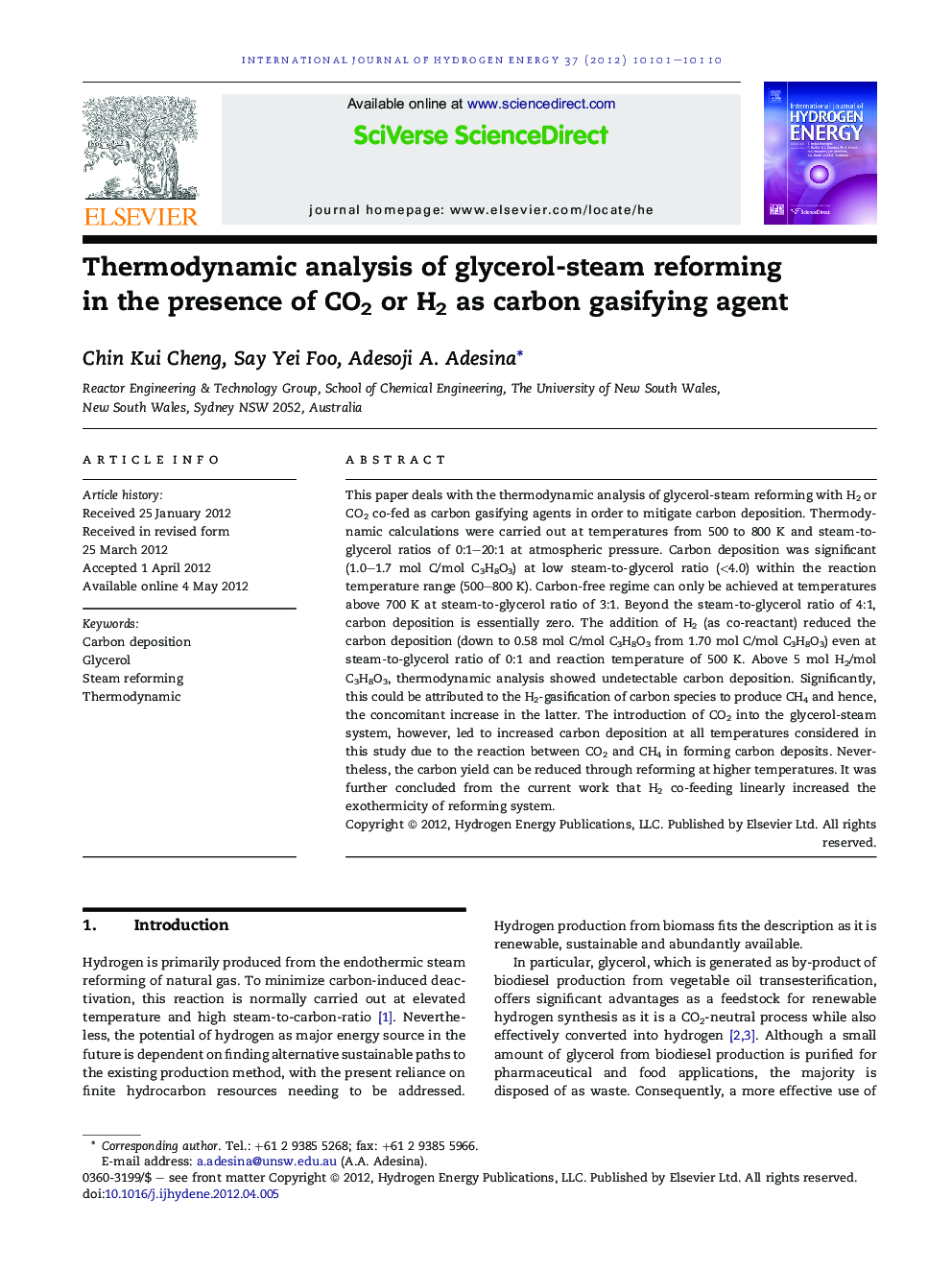| Article ID | Journal | Published Year | Pages | File Type |
|---|---|---|---|---|
| 1275196 | International Journal of Hydrogen Energy | 2012 | 10 Pages |
This paper deals with the thermodynamic analysis of glycerol-steam reforming with H2 or CO2 co-fed as carbon gasifying agents in order to mitigate carbon deposition. Thermodynamic calculations were carried out at temperatures from 500 to 800 K and steam-to-glycerol ratios of 0:1–20:1 at atmospheric pressure. Carbon deposition was significant (1.0–1.7 mol C/mol C3H8O3) at low steam-to-glycerol ratio (<4.0) within the reaction temperature range (500–800 K). Carbon-free regime can only be achieved at temperatures above 700 K at steam-to-glycerol ratio of 3:1. Beyond the steam-to-glycerol ratio of 4:1, carbon deposition is essentially zero. The addition of H2 (as co-reactant) reduced the carbon deposition (down to 0.58 mol C/mol C3H8O3 from 1.70 mol C/mol C3H8O3) even at steam-to-glycerol ratio of 0:1 and reaction temperature of 500 K. Above 5 mol H2/mol C3H8O3, thermodynamic analysis showed undetectable carbon deposition. Significantly, this could be attributed to the H2-gasification of carbon species to produce CH4 and hence, the concomitant increase in the latter. The introduction of CO2 into the glycerol-steam system, however, led to increased carbon deposition at all temperatures considered in this study due to the reaction between CO2 and CH4 in forming carbon deposits. Nevertheless, the carbon yield can be reduced through reforming at higher temperatures. It was further concluded from the current work that H2 co-feeding linearly increased the exothermicity of reforming system.
► Carbon laydown is reduced via H2-gasification. ► The presence of CO2 in the feed system increases carbon deposition at all temperatures. ► The overall energy requirement of glycerol-steam reforming system reduces when H2 is present in feed.
